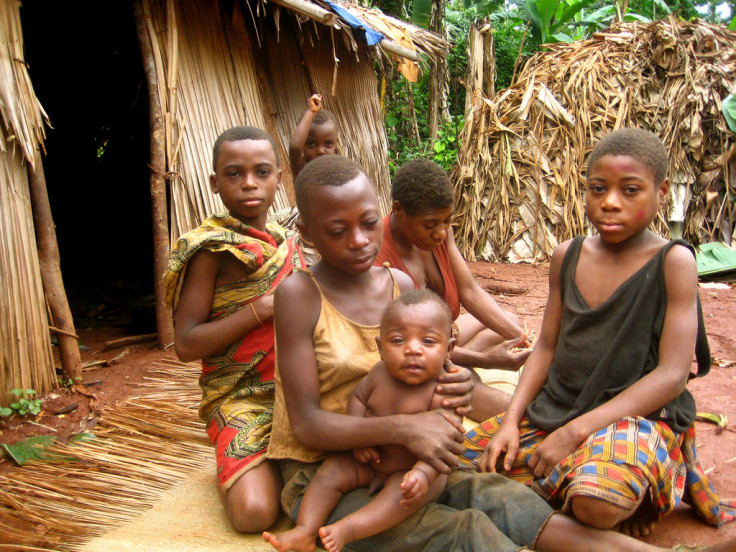West Africa Baka pygmy growth rate study shows convergent evolution and adaptive nature of mankind

West Africa Baka pygmies have a different growth pattern to pygmy populations in East Africa, showing convergent evolution and the hugely adaptive nature of mankind.
Scientists have found Baka pygmies are born at a standard size but then their growth rate slows substantially over the next two to three years.
After this point, they return to growing at the same rate as European populations – but the postnatal slowdown is enough to lead to the phenotype of a short stature in later life. Findings were published in the journal Nature Communications.
Corresponding author Fernando Ramirez Rozzi, from the CNRS, told IBTimes UK the results were a big surprise and it was the first time scientists had been able to provide chronological evidence to show how two pygmy populations have different evolutionary histories but arrived at the same phenotype.
Researchers took growth data on 500 individuals of different age ranges over seven years – with some from birth to seven, others from five to 12 and so on. This gave them the chronological data to create a growth pool. What Rozzi said is interesting is we clearly see an adaptation for adult life being produced so early in postnatal life.
Smaller growth rates
In two different studies of East African pygmies, scientists had previously shown this population have smaller growth rates before birth – they are born smaller, meaning the hormonal changes would have been to do with prenatal hormones. In comparison, the Baka pygmies' short stature is a result of changes to hormones postnatal.
The trouble at this point, he said, is growth hormone changes are not well understood so to look at this further, comparative data from European populations will be needed to understand how and why the Baka pygmies have slowed growth for the first two years.
"I think our study calls for new research looking at growth to understand adaptation of modern human and even to the interpretation of evolution of hominids and the future"
While understanding this change will require further research, Rozzi said the differences between the West and East Africa pygmies clearly shows convergent evolution – that two separate populations arrived at the same adaptive phenotype through different paths.
"We assume pygmy phenotype – small stature in adulthood – is an adaptation to live in the forest," he said. "It was exciting because we can observe the process in the west is different from the process in the east. And the two process lead to the same phenotype. That means convergent evolution. Different process going to the same final solution."
He added that until just recently, it was thought the two populations had followed similar evolutionary histories. Rozzi said: "Now we can show east and west have different history and they converge in the same phenotype."
Evolution of pygmy populations
Along with this, another interesting aspect of the study is the rate at which the two pygmy populations evolved.
They would have separated in the last 15,000 years, before the forest in Africa started to grow and expand until its biggest point around 8,000 years ago. Evidence of pygmy populations living in the region have been found as long as 5,000 years ago. This means they must have adapted within the space of around 5,000 years, Rozzi explained.
He said this shows growth in modern humans is an adaptive trait that can quickly change to suit different environments. "That is a very new concept," he said, adding it could help to explain why, as a species, humans have been so very successful.
Within just a few thousand years of leaving Africa, early man was expanding across the globe, and the ability to do this was likely aided by the ability for size adaptation to suit different environments.
He added: "I think our study calls for new research looking at growth to understand adaptation of modern human and even to the interpretation of evolution of hominids and the future."
© Copyright IBTimes 2025. All rights reserved.






















